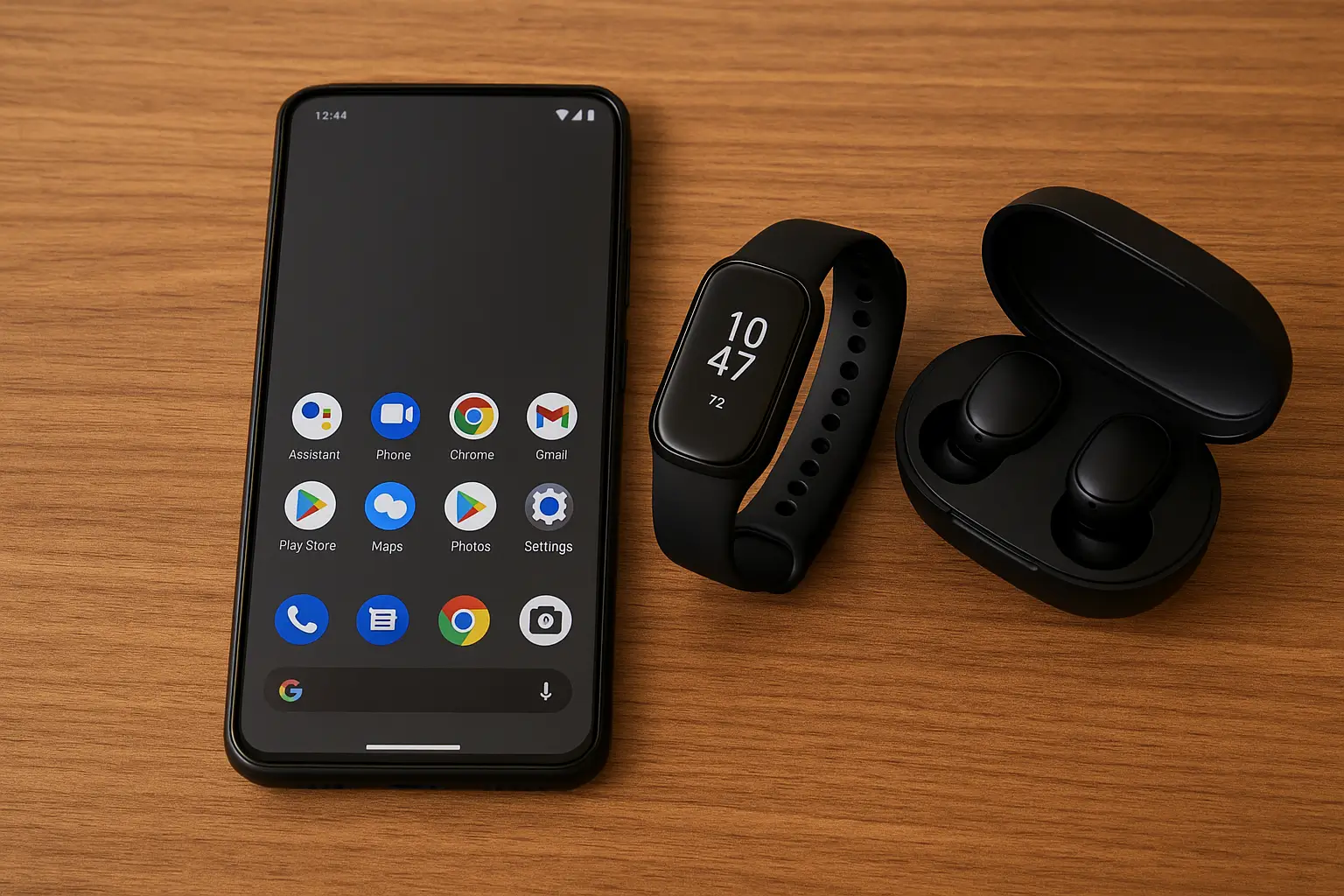In today’s fast-paced digital world, technology plays a central role in almost every aspect of our lives. But amid all the innovation, a specific term often comes up: gadgets.
You’ve probably heard it countless times, but what exactly does it mean? In this article, we’ll break down what gadgets are, how they work, and why they’ve become essential in modern life — all in a simple, easy-to-understand way.
What Does the Word “Gadget” Mean?
The term gadget refers to a small electronic or mechanical device designed to perform a specific function. Gadgets are usually portable, smart, and efficient, often combining convenience with the latest technological innovation.
In short, a gadget is a clever tool that makes everyday tasks easier, more fun, or more productive. Unlike larger electronics like televisions or refrigerators, gadgets tend to be compact, focused on a particular use, and often include cutting-edge features.
Key Characteristics of Gadgets
Gadgets stand out for several common features:
- Compact: They are usually lightweight and easy to carry or use anywhere.
- Purpose-driven: Designed to solve a specific problem or serve a particular function.
- Tech-based: Incorporate electronics, software, or smart technologies.
- User-friendly: Focused on simplicity and seamless user interaction.
- Connected: Many gadgets connect to smartphones, the internet, or other devices.
These characteristics make gadgets versatile, efficient, and increasingly popular in everyday life.
Common Examples of Gadgets
From fitness to entertainment, gadgets are everywhere. Here are some of the most common and widely used:
1. Smartwatches
These are more than just watches. Smartwatches track your heart rate, monitor sleep, count steps, show mobile notifications, and even allow calls and voice commands.
2. Wireless Earbuds
Bluetooth-enabled earbuds offer freedom from tangled cables. Many include noise cancellation, voice assistant integration, and sleek, compact designs.
3. Action Cameras (like GoPro)
Perfect for adventurers, action cameras are tiny, rugged, and deliver high-quality video even in extreme conditions.
4. Fitness Trackers
These wristbands help users monitor physical activity, sleep quality, calories burned, and overall fitness progress.
5. Smart Speakers
Devices like Amazon Echo or Google Nest respond to voice commands, play music, control smart home appliances, and provide real-time information.
Gadgets vs. Electronics: What’s the Difference?
While both gadgets and electronics fall under the tech category, there’s a key difference:
- Electronics are a broad category that includes all devices powered by electricity — TVs, laptops, refrigerators, etc.
- Gadgets are a subcategory of electronics: compact, innovative tools designed for specific tasks, usually focused on ease of use, portability, and lifestyle enhancement.
In short: all gadgets are electronics, but not all electronics are gadgets.
What Are Gadgets Used For?
Gadgets serve a wide range of purposes, helping us in daily routines, work, health, entertainment, and more. Here’s how:
- Health improvement: Fitness trackers and smart scales help monitor your well-being.
- Time-saving: Smart assistants and productivity gadgets streamline tasks.
- Entertainment: Gadgets like wireless speakers and VR headsets enhance media experiences.
- Home automation: Smart plugs, lights, and thermostats make life more convenient.
- Safety and security: Portable cameras and tracking devices help protect belongings and loved ones.
As technology evolves, gadgets continue to become smarter, smaller, and more powerful.
Trending Gadgets in 2025
Want to know what’s hot in the gadget world this year? These are some of the most sought-after gadgets in 2025:
Smart Glasses
Blending augmented reality (AR) and voice command features, smart glasses are becoming more mainstream, offering hands-free navigation and notifications.
Pet Gadgets
Smart feeders, GPS collars, and pet monitoring cameras are booming, helping pet owners stay connected with their furry friends.
Solar Power Banks
Eco-friendly, portable charging with solar capabilities is in demand — especially among travelers and digital nomads.
Mini Projectors
Palm-sized projectors turn any surface into a cinema screen, perfect for streaming anywhere.
Home Automation Hubs
All-in-one devices that let users control lights, appliances, cameras, and more with a single app or voice command.
How to Choose the Right Gadget
Before buying a gadget, ask yourself:
- What do I need it for?
- Is it compatible with my devices (iOS, Android, Windows)?
- What is the battery life and connectivity range?
- Does it have good reviews and after-sales support?
- Is it worth the price based on its features?
Choosing a gadget isn’t just about trend — it should be about value and functionality.
Are Gadgets Worth the Investment?
Absolutely — as long as the gadget solves a real problem or improves your lifestyle. A well-chosen gadget can:
- Save time and effort
- Make routines more enjoyable
- Support fitness or mental health
- Increase productivity at work or school
- Enhance your home’s comfort or security
However, not every new release is essential. Avoid buying gadgets just for the hype. Instead, focus on those that bring real benefits.
Gadgets for Specific Lifestyles
Gadgets aren’t one-size-fits-all. Different users benefit from different types of devices:
- Students: Portable keyboards, e-ink tablets, smart lamps
- Parents: Baby monitors, smart thermometers, child trackers
- Fitness lovers: Smartwatches, heart rate sensors, smart water bottles
- Travelers: Noise-canceling headphones, multi-country adapters, pocket translators
- Remote workers: Portable monitors, ergonomic mouses, USB hubs
When choosing a gadget, think about your daily routine and where tech can help.
Conclusion
Gadgets are no longer luxury items or niche tools. They’ve become an essential part of modern living — improving health, security, convenience, and entertainment. Whether you’re a tech enthusiast or just someone looking to simplify life, there’s a gadget out there for you.
As innovation continues, gadgets are becoming more integrated with artificial intelligence, sustainability, and personalization. Staying informed about the latest trends can help you make better tech decisions and enjoy the benefits that these small, smart tools offer.
